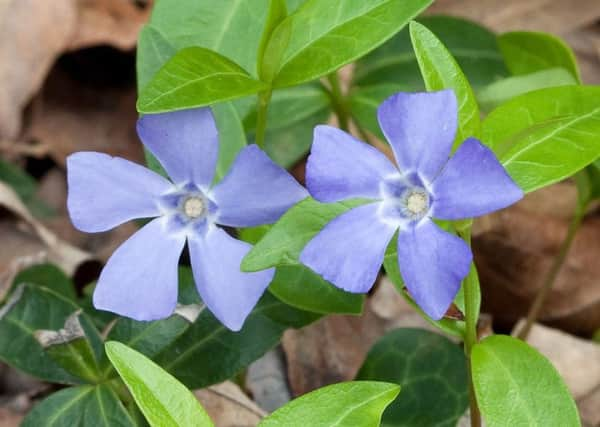Country Diary: Plant is regarded as a symbol of immortality


Taking Tigga from Manor Road down to Peasholm Park, as we walked beside the stream, a large colony of winter heliotrope clothed the embankment, exuding a faint aroma of vanilla.
My mind reflected a day several years ago, when a little further downstream, a ‘plap’ alerted by attention to a water vole. It then swam rapidly away, but I always live in hope of seeing one locally again.
Advertisement
Hide AdAdvertisement
Hide AdBrilliant sunshine illuminated a scene of destruction. Gone were the bandstand; boathouse and jetty, and Buttercup kiosk, all to be re-constructed in the near future. The vast expanse of mud was occupied by up to 200 gulls idly resting in the sun. Mallard were the only ducks frequenting the water during my visit.
What a treasure we have in Peasholm Park, and how fortunate that several bird tables have been erected to help birds survive harsh days of winter. Grey squirrels abounded! They seemed to scuttle everywhere, competing with pigeons for food, and climbing trees and bird-feeding stands too. Wood carvings of fungi and mammals always create added interest and focal points.
Many wild, and cultivated flowers are now in bloom, with sheets of snowdrops, golden aconites and celandines, and multi-coloured corcuses in profusion.
One sprawling plant with long stems, and oval green leaves, is now most conspicuous, and easily identified by its bright blue/purple, five-petalled flowers with a white ring around the centres.
Advertisement
Hide AdAdvertisement
Hide AdIt’s the lesser periwinkle that brightens copses, hedgebanks and woods along with many gardens. Its ‘big brother’ the greater periwinkle is seldom, if ever, seen far from civilisation.
In medieval England, garlands of periwinkles were sometimes worn by people awaiting execution. Maybe because being an evergreen plant it was regarded as a symbol of immortality. It was also said to staunch nose bleeding in Christians if made into a garland and hung around the neck.
Birds tend to have been heard rather than seen this week, though our friend Stephen reported having observed a treecreeper close enough to touch! It’s the only small bird we have with a curved beak, and the only one that climbs tree trunks in search of insects in the narrow crevices.
Dusk was descending, as Tigga and myself returned from a local walk completed by the call of a tawny owl. The long-drawn-out hoot, and also a sharp ke-wick, ke-wick, help distinguish this owl. It’s generally Britain’s most common owl, which is widespread in woodland and extending into towns, villages and suburbs, but seldom seen by day.